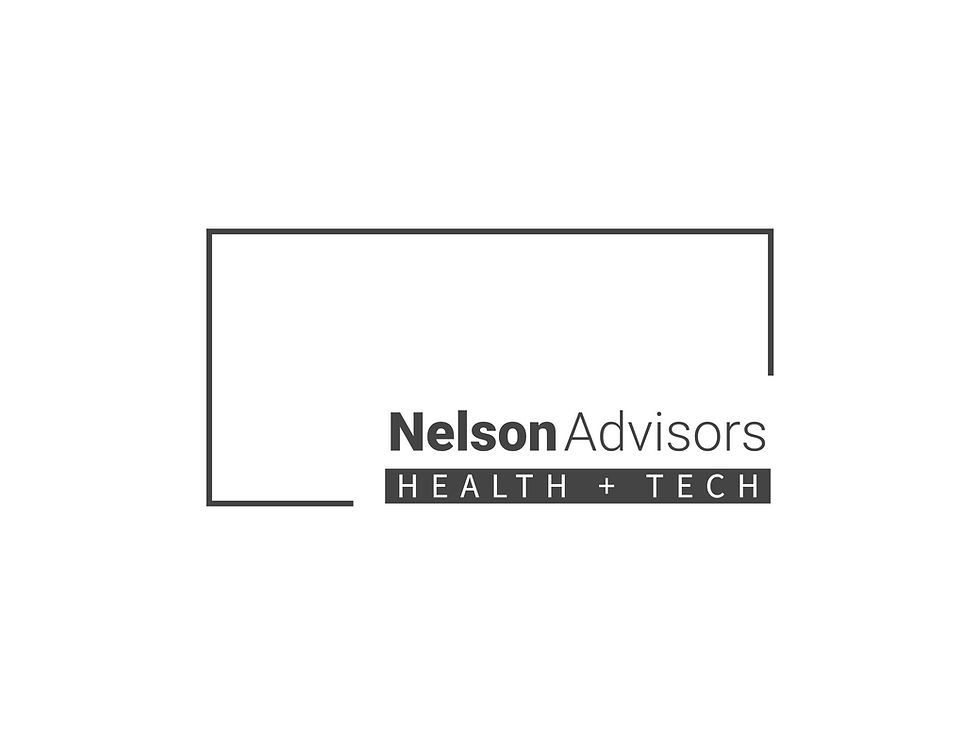The 4 Big Gaps in HealthTech: Funding, Trust, Evidence, Valuation
- Lloyd Price
- Oct 28, 2024
- 10 min read

Exec Summary:
The healthtech industry, while brimming with potential, faces several significant challenges that hinder its full potential. These four key gaps – funding, trust, evidence, and valuation – are critical barriers to innovation and adoption.
1. Funding Gap - between founders and investors
Limited Investor Appetite: While healthtech is a burgeoning sector, it often requires significant upfront investment and a longer timeline for returns compared to other tech sectors.
Regulatory Hurdles: The stringent regulatory environment in healthcare can increase development costs and delay time to market, making it less attractive to investors.
Risk Aversion: Investors may be hesitant to invest in early-stage healthtech companies due to the inherent risks and uncertainties associated with medical device and drug development.
2. Trust Gap - between suppliers and providers
Data Privacy Concerns: With increasing reliance on data-driven solutions, ensuring data privacy and security is paramount. Any breach of trust can severely damage a company's reputation.
Regulatory Compliance: Adhering to complex regulatory standards, such as HIPAA and GDPR, can be burdensome and costly.
Patient Adoption: Patients may be hesitant to adopt new technologies, especially if they involve sharing personal health information or using AI-powered tools.
3. Evidence Gap - between suppliers and providers and investors
Rigorous Clinical Trials: Conducting rigorous clinical trials to demonstrate the efficacy and safety of new technologies can be time-consuming and expensive.
Real-World Evidence: Gathering real-world evidence to support the use of new technologies can be challenging, especially in diverse healthcare settings.
Lack of Standardisation: The absence of standardised methods for evaluating healthtech solutions can hinder their adoption and reimbursement.
4. Valuation Gap - between buyers and sellers
Unique Business Models: Healthtech companies often have unique business models that may not fit traditional valuation frameworks.
Long-Term Value: The long-term value of healthtech innovations can be difficult to quantify, especially when considering potential societal impact and healthcare cost savings.
Investor Expectations: Investors may have unrealistic expectations regarding the pace of innovation and the potential for rapid returns.
To bridge these gaps, collaboration between healthcare providers, technology companies, regulators, and investors is essential. By fostering innovation, addressing regulatory challenges, and building trust, we can unlock the full potential of healthtech to improve patient outcomes and transform healthcare delivery.
To address these challenges, the healthtech industry needs to:
Foster Collaboration: Encourage collaboration between startups, established companies, academic institutions, and healthcare providers to share knowledge, resources, and expertise.
Invest in Data Infrastructure: Develop robust data infrastructure to facilitate data collection, integration, and analysis.
Prioritize Patient-Centred Design: Design healthtech solutions with the patient's needs and preferences in mind.
Build Trust and Transparency: Prioritize data privacy and security, and communicate openly with patients and healthcare providers about the benefits and risks of new technologies.
Advocate for Supportive Policies: Advocate for policies that support innovation, such as streamlined regulatory processes and increased funding for research and development.
Nelson Advisors work with Healthcare Technology Founders, Owners and Investors to assess whether they should 'Build, Buy, Partner or Sell' in order to maximise shareholder value.
Healthcare Technology Thought Leadership from Nelson Advisors – Market Insights, Analysis & Predictions. Visit https://www.healthcare.digital
HealthTech Corporate Development - Buy Side, Sell Side, Growth & Strategy services for Founders, Owners and Investors. Email lloyd@nelsonadvisors.co.uk
HealthTech M&A Newsletter from Nelson Advisors - HealthTech, Health IT, Digital Health Insights and Analysis. Subscribe Today! https://lnkd.in/e5hTp_xb
HealthTech Corporate Development and M&A - Buy Side, Sell Side, Growth & Strategy services for companies in Europe, Middle East and Africa. Visit www.nelsonadvisors.co.uk

The Funding Gap in HealthTech: A Persistent Challenge
The funding gap between healthtech founders and investors is a persistent challenge that can significantly hinder the development of innovative solutions. Here are some of the primary factors contributing to this gap:
Unique Challenges of HealthTech Investments
Long Development Cycles: Healthtech products, particularly medical devices and drugs, often require lengthy development cycles, including clinical trials and regulatory approvals. This can delay returns on investment.
High Regulatory Hurdles: The stringent regulatory environment in the healthcare industry adds complexity and uncertainty to the investment process.
Market Uncertainty: The healthcare market is subject to constant changes, such as evolving reimbursement policies and shifting healthcare trends. This makes it difficult to accurately predict future market dynamics.
Investor Perspective
Risk Aversion: Investors are often risk-averse, especially when it comes to early-stage healthtech companies. The potential for high returns is balanced against the significant risks associated with the industry.
Lack of Expertise: Many investors may lack the specific expertise required to evaluate the technical feasibility, market potential, and regulatory compliance of healthtech ventures.
Exit Strategies: Investors often seek clear exit strategies, such as initial public offerings (IPOs) or acquisitions. However, the healthtech industry has a relatively low IPO rate compared to other sectors.
Founder Perspective
Funding Challenges: Healthtech founders often face difficulties in securing funding, particularly in the early stages of development. This can limit their ability to hire talent, conduct research, and scale their operations.
Valuation Discrepancies: Founders may have difficulty agreeing on valuations with investors, especially when there is a lack of comparable public companies or historical data.
Intellectual Property Protection: Protecting intellectual property can be challenging, especially in a rapidly evolving industry where ideas can be easily copied or imitated.
Bridging the Gap
To bridge this funding gap, several strategies can be employed:
Government Support: Government initiatives, such as grants, tax incentives, and loan programs, can provide crucial funding for early-stage healthtech companies.
Public-Private Partnerships: Collaborations between public and private sectors can facilitate the development of innovative healthtech solutions.
Impact Investing: Impact investors prioritise social and environmental impact alongside financial returns, making them a potential source of funding for healthtech companies.
Crowdfunding: Crowdfunding platforms can enable healthtech startups to raise funds directly from the public.
Accelerator and Incubator Programs: These programs can provide mentorship, funding, and resources to help healthtech startups grow and scale.
By addressing these challenges and leveraging these strategies, the healthtech industry can unlock its full potential and drive innovation in healthcare.

The Trust Gap in HealthTech: A Barrier to Innovation
The trust gap between healthtech suppliers and providers is a significant challenge that can hinder the adoption of innovative solutions. This gap arises from a variety of factors, including:
Data Privacy and Security Concerns
Patient Data Sensitivity: Healthcare providers are entrusted with sensitive patient data. Any breach or misuse of this data can have severe consequences, both legally and ethically.
Cybersecurity Risks: Healthtech solutions, like any digital system, are vulnerable to cyberattacks. Providers must ensure that the solutions they adopt are secure and compliant with data privacy regulations.
Interoperability Challenges
Data Standards: The lack of standardised data formats and interoperability standards can hinder the integration of healthtech solutions with existing healthcare systems.
Vendor Lock-In: Providers may be hesitant to adopt solutions that lock them into a specific vendor, limiting their flexibility and increasing costs.
Lack of Evidence-Based Claims
Overhyped Promises: Some healthtech suppliers may make exaggerated claims about the benefits of their solutions, leading to unrealistic expectations and disappointment.
Insufficient Clinical Evidence: Providers often require rigorous clinical evidence to support the efficacy and safety of new technologies.
Cost and Return on Investment
High Initial Costs: Implementing new healthtech solutions can involve significant upfront costs, including hardware, software, and training.
Uncertain ROI: Providers may struggle to quantify the return on investment (ROI) of these solutions, particularly in terms of improved patient outcomes and reduced costs.
Overcoming the Trust Gap
To bridge this trust gap, healthtech suppliers and providers must work together to build strong relationships based on transparency, collaboration, and mutual trust. Here are some strategies to foster trust:
Data Security and Privacy:
Implement robust security measures to protect patient data.
Adhere to data privacy regulations, such as HIPAA and GDPR.
Regularly assess and update security protocols.
Interoperability Standards:
Support the adoption of standardized data formats and interoperability standards.
Develop APIs and other integration tools to facilitate seamless data exchange.
Evidence-Based Claims:
Provide rigorous clinical evidence to support product claims.
Conduct randomized controlled trials and real-world studies.
Share data and insights with the broader healthcare community.
Transparent Pricing and Support:
Offer transparent pricing models and clear terms of service.
Provide excellent customer support and maintenance services.
Offer flexible payment options and subscription models.
By addressing these challenges and fostering trust, healthtech suppliers and providers can accelerate the adoption of innovative solutions that improve patient care and streamline healthcare operations.

The Evidence Gap in HealthTech: A Triangular Challenge
The evidence gap in healthtech is a complex issue involving suppliers, providers, and investors. It arises from a combination of factors, including:
Challenges for Suppliers
Rigorous Clinical Trials: Conducting rigorous clinical trials can be expensive and time-consuming, especially for early-stage companies.
Real-World Evidence: Gathering real-world evidence to demonstrate the effectiveness and safety of healthtech solutions can be challenging, particularly in diverse healthcare settings.
Regulatory Hurdles: Navigating complex regulatory landscapes can delay product launches and increase costs.
Challenges for Providers
Lack of Standardised Evidence: Healthcare providers often struggle to assess the quality and reliability of evidence provided by healthtech suppliers.
Limited Resources for Evaluation: Providers may lack the time and resources to thoroughly evaluate the clinical effectiveness of new technologies.
Reimbursement Challenges: Securing reimbursement for innovative healthtech solutions can be difficult, especially in the absence of strong clinical evidence.
Challenges for Investors
Uncertainty in Return on Investment: Investors often seek strong evidence of a product's efficacy and market potential before investing.
Risk Aversion: The high-risk nature of healthtech investments, coupled with the uncertainty of regulatory approvals and market adoption, can deter investors.
Lack of Clear Exit Strategies: A clear exit strategy, such as an IPO or acquisition, can be crucial for investors.
However, the healthtech industry often has limited exit opportunities.
Bridging the Evidence Gap
To address the evidence gap, stakeholders need to collaborate and work together to:
Establish Clear Standards: Develop clear standards for clinical evidence and real-world data to ensure consistency and comparability.
Promote Data Sharing: Encourage data sharing and collaboration between researchers, clinicians, and industry partners.
Invest in Research and Development: Increase investments in research and development to generate high-quality evidence.
Leverage Real-World Data: Utilise real-world data to assess the effectiveness and safety of healthtech solutions in real-world settings.
Build Strong Partnerships: Forge strong partnerships between suppliers, providers, and investors to facilitate knowledge sharing and collaboration.
Educate Stakeholders: Educate healthcare providers, payers, and policymakers about the benefits of healthtech and the importance of evidence-based decision-making.

The Valuation Gap in HealthTech: A Persistent Challenge
The valuation gap in healthtech is a significant challenge that often arises during mergers and acquisitions, venture capital funding rounds, and initial public offerings (IPOs). This gap stems from several factors:
Challenges for Buyers
Future Potential: Accurately valuing the future potential of healthtech companies, especially those with innovative technologies and disruptive business models, can be challenging.
Regulatory Hurdles: The complex regulatory landscape in healthcare can impact the timing and cost of bringing products to market, affecting valuation.
Market Uncertainty: The healthcare market is subject to constant changes, including evolving reimbursement policies, shifting patient demographics, and emerging competitors. This uncertainty can make it difficult to assess the long-term value of a healthtech company.
Challenges for Sellers
High Expectations: Healthtech founders and investors often have high expectations for valuation, particularly for companies with promising technologies and strong growth potential.
Unique Business Models: The unique business models of many healthtech companies, such as subscription-based models, value-based care, and personalised medicine, can make valuation complex.
Lack of Comparable Public Companies: The absence of comparable public companies in the healthtech sector can make it difficult to establish a valuation benchmark.
Bridging the Valuation Gap
To bridge the valuation gap, several strategies can be employed:
Robust Financial Projections: Develop detailed financial projections that accurately reflect the company's future revenue and profitability.
Strong Intellectual Property: Protect intellectual property through patents and trademarks to enhance the company's value.
Strategic Partnerships: Collaborate with strategic partners to strengthen the company's market position and increase its valuation.
Experienced Management Team: A strong and experienced management team can significantly impact a company's valuation.
Clear Exit Strategy: A well-defined exit strategy, such as an IPO or acquisition, can increase investor confidence and drive valuation.
Professional Valuation Services: Engage experienced valuation professionals to provide accurate and reliable valuations.
By understanding the factors that contribute to the valuation gap and implementing effective strategies, healthtech companies can bridge the divide and achieve fair valuations.

2025: the year to bridge the 4 Big Gaps in HealthTech?
2025 is indeed poised to be a pivotal year for bridging the four big gaps in healthtech: funding, trust, evidence, and valuation. Let's explore how these gaps might be narrowed:
Funding Gap:
Increased Investor Interest: With increasing awareness of the potential of healthtech to transform healthcare, more investors are likely to allocate funds to this sector.
Government Support: Governments worldwide are recognizing the importance of healthtech and may provide increased funding and supportive policies.
Alternative Funding Sources: Crowdfunding and impact investing are emerging as viable options for healthtech startups.
Trust Gap:
Data Privacy and Security: Stricter regulations and advancements in cybersecurity technology can help build trust in data handling practices.
Transparency and Communication: Open and transparent communication between healthtech companies, healthcare providers, and patients can foster trust and understanding.
Real-World Evidence: Demonstrating the real-world impact of healthtech solutions through rigorous clinical trials and real-world studies can enhance trust.
Evidence Gap:
Standardised Data and Interoperability: The adoption of standardised data formats and interoperability standards can facilitate data sharing and analysis.
Real-World Evidence Generation: Increased focus on generating real-world evidence can provide valuable insights into the effectiveness and safety of healthtech solutions.
AI-Driven Insights: AI can be used to analyse large datasets and identify patterns that can inform evidence-based decision-making.
Valuation Gap:
Clearer Valuation Metrics: The development of more specific valuation metrics for healthtech companies can help bridge the gap between buyers and sellers.
Increased Market Liquidity: As more healthtech companies go public or are acquired, the market will become more liquid, providing a clearer valuation benchmark.
Strategic Partnerships: Collaborations with established healthcare organisations can enhance the value proposition of healthtech companies.
While these trends offer hope for bridging the four big gaps in healthtech, challenges remain. Ongoing efforts to address data privacy, regulatory hurdles, and the need for robust evidence will be crucial. By working together, healthtech stakeholders can create a future where innovation thrives and patient care is significantly improved.
Nelson Advisors work with Healthcare Technology Founders, Owners and Investors to assess whether they should 'Build, Buy, Partner or Sell' in order to maximise shareholder value.
Healthcare Technology Thought Leadership from Nelson Advisors – Market Insights, Analysis & Predictions. Visit https://www.healthcare.digital
HealthTech Corporate Development - Buy Side, Sell Side, Growth & Strategy services for Founders, Owners and Investors. Email lloyd@nelsonadvisors.co.uk
HealthTech M&A Newsletter from Nelson Advisors - HealthTech, Health IT, Digital Health Insights and Analysis. Subscribe Today! https://lnkd.in/e5hTp_xb
HealthTech Corporate Development and M&A - Buy Side, Sell Side, Growth & Strategy services for companies in Europe, Middle East and Africa. Visit www.nelsonadvisors.co.uk


















































Comments